|
|
|
|
Ferret Scout Car Mk.2
Airfix, 1/35 scale
Reviewed by Brett Green
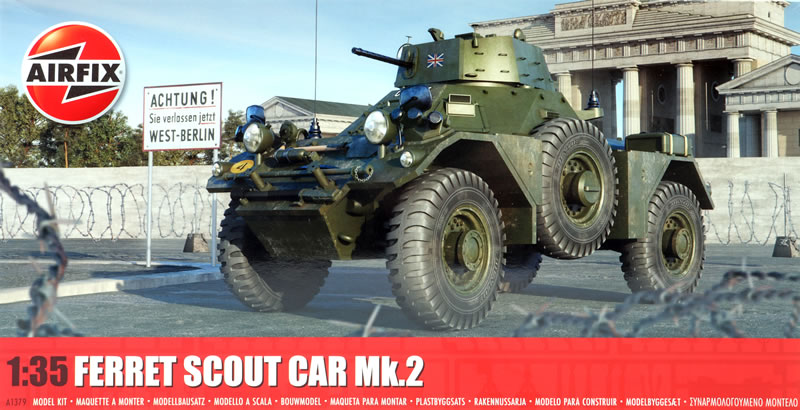
| Stock Number and Description | Airfix Ferret Scout Car Mk.2. Kit No. A1379 |
| Scale: | 1/35 |
| Media and Contents: | 179 parts in medium green coloured plastic; eight parts in clear plastic; decals for three marking options. |
| Price: | GBP£23.99 (UK Price), £19.99 (Export Price) Plus shipping available online from Hannants |
| Review Type: | First Look |
| Advantages: | High level of detail; plenty of useful options; poseable hatches; partial interior; includes clear parts. |
| Disadvantages: | Angular shovel blade. |
| Recommendation: | This is a brand new original Airfix kit and I like it. Detail is good, the partial interior will be welcomed by detailers and ignored by others who don't care, hatches may be posed open or closed and the parts breakdown is modeller-friendly. Airfix's new 1:35 scale Ferret Mk.2 looks like a fast build too. I think I will test that impression out before long! |
Background
The Scout Car, Recce, Ferret, Mk 2, also commonly known as the Ferret Scout Car, is a British armoured fighting vehicle designed and built for reconnaissance purposes. The Ferret was produced between 1952 and 1971 by the UK company Daimler. It was widely used by regiments in the British Army, as well as the RAF Regiment and Commonwealth countries throughout the period.
The Ferret was developed in 1949 as a result of a British Army requirement issued in 1947. 'Light reconnaissance cars' existed during the Second World War, notably the Daimler Dingo. Given its experience with the successful Dingo (6,626 produced and one of two British AFVs produced throughout WWII) Daimler was awarded a development contract in October 1948, and in June 1950 the first prototype of the Car, Scout, 4×4, Liaison (Ferret) Mark 1 was delivered.

Ferret suspension consisted of pairs of transverse links and single coil springs, the wheels driven by Tracta constant-velocity joints, but the Ferret benefited from epicyclic reduction gears reducing transmission torque loads, essential with the six cylinder 4.26 litre water-cooled Rolls-Royce B.60 petrol engine. Connected by a fluid coupling to a pre-selector five speed epicyclic gearbox, all gears available in reverse, in its original form, the Ferret produced 116 bhp (87 kW) at 3,300 rpm and 129 bhp (96 kW) at 3,750 in its final form.
Ferret Mk.1
Compared with the Daimler Dingo and Canadian Ford Lynx, the Ferret featured a larger cabin, directly mounted to the hull (the Ferret is much noisier than Dingo, lacking a monocoque body).
The crew was protected from shell splinters by 6–16 mm (0.24–0.63 in) steel plate at most angles except directly overhead because the basic vehicle was open-topped and unarmed, with the exception of six forward-firing grenade launchers fitted to the hull over the front wheels (normally carrying smoke grenades), a feature found on all subsequent marks and models.
However, the Ferret normally carried a .303" (7.7 mm) Bren light machine gun or a pintle-mounted .30" (7.62 mm) Browning light machine gun[4] in addition to the crew's personal weapons.
Ferret Mk.2
Compared to the lightly armed and protected Mark 1, the Mark 2 was designed from the outset to mount a .30" (7.62 mm) Browning in a one-person traversable turret, at the cost of one crew member.
While this offered better crew protection and protected the exposed gunner, the turret raised the height of the vehicle.
FirstLook
The brand new Airfix 1:35 scale Ferret Scout Car Mk.2 comprises a fairly modest 179 parts in medium green coloured plastic, eight parts in clear plastic and decals for three marking options.
This is an all-new model directly from Airfix.
The plastic appears to be somewhere pleasingly between hard and soft. Goldilocks would approve.
Surface textures are well done with a combination of pressed metal effect and crisply recessed panel lines, supplemented by a bunch of appropriately raised structural features.
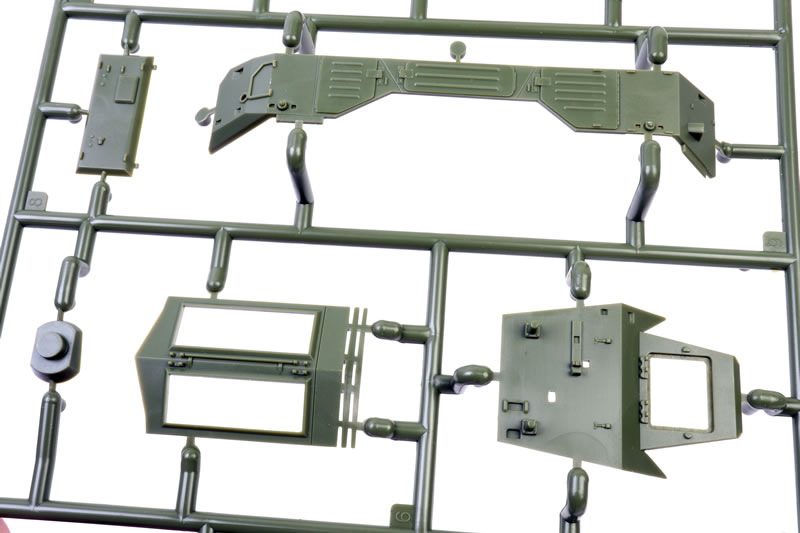
The hull is supplied as a flat pack with separate sides, front, rear and top panels.
The turret is broken down in a similar fashion.
There are a number of ejector pin circles but these are mostly located in places that will be hidden once the model is built.
Detail is more than adequate. The kit boasts a partial interior. Two nicely detailed alternative radio sets are included.
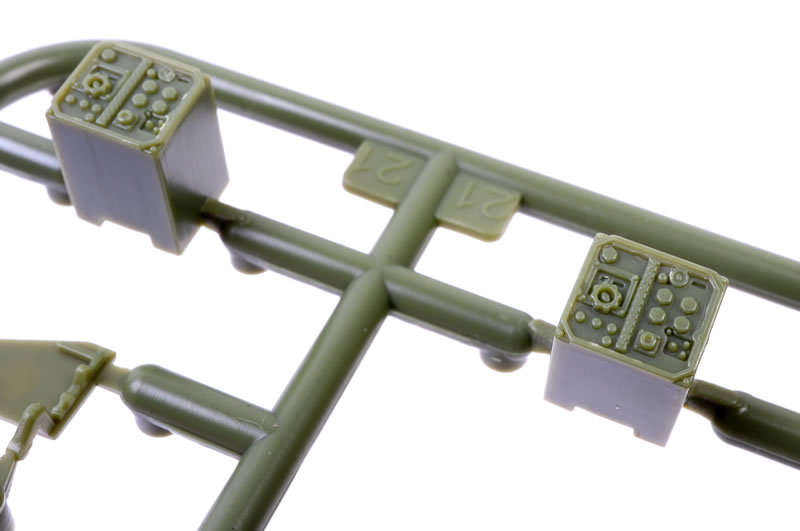
The driver's compartment also offers the rear firewall, seat with backrest and steering wheel.
Absent items include (or should I say exclude) the instrument panel, pedals and handles. The instrument panel is a particularly surprising omission although, to be fair, it would be barely visible in the depths of the forward hull.
No engine or associated parts are provided either, although the engine hatches are separate parts. Perhaps Airfix will introduce a special edition, or the after-market will likely supply a detailed compartment before long.
Hull hatches are well detailed, being made up from separate inside and outside halves. The hatches may be posed open or closed.
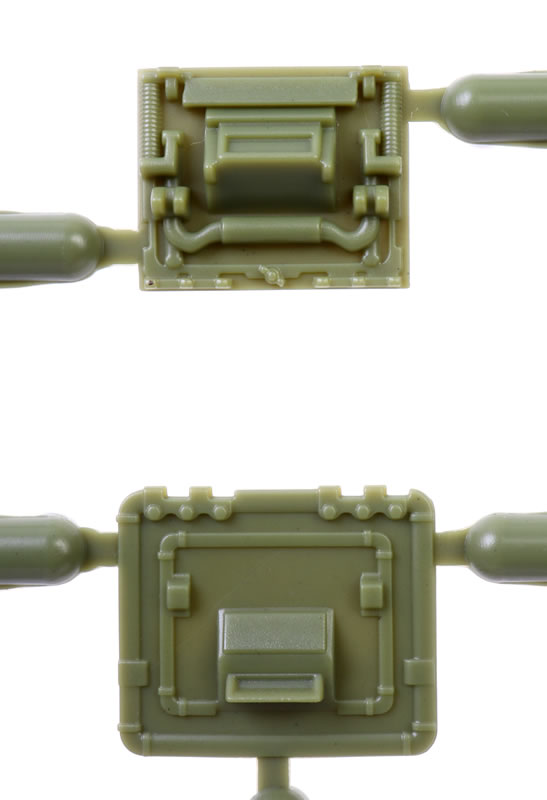
Wheels are all-plastic and provided as two parts each. There is no raised lettering on the sidewalls although it is shown on the box art.
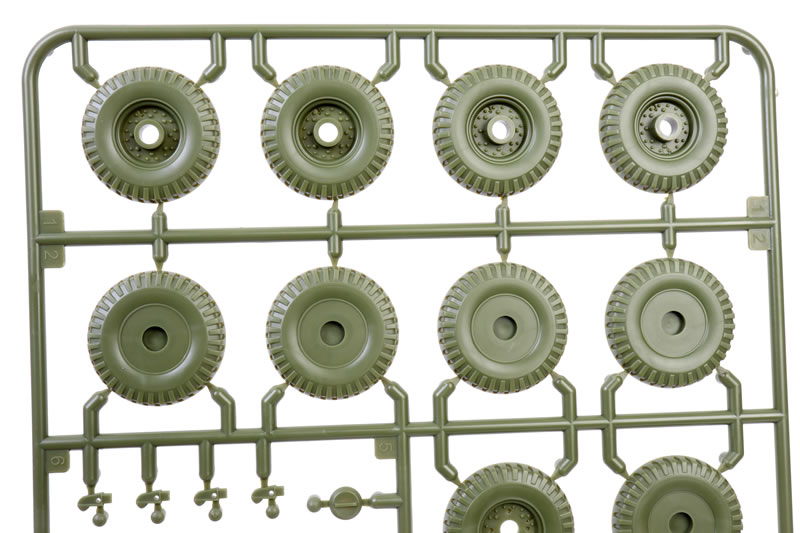
Running gear and steering are fixed flat and straight ahead.
Two different styles of side hull stowage are offered - one with vertical drawers and one with horizontal drawers.
Tools are a little chunky snd simplified. The shovel has a strange 45 degree angled rim around the blade.
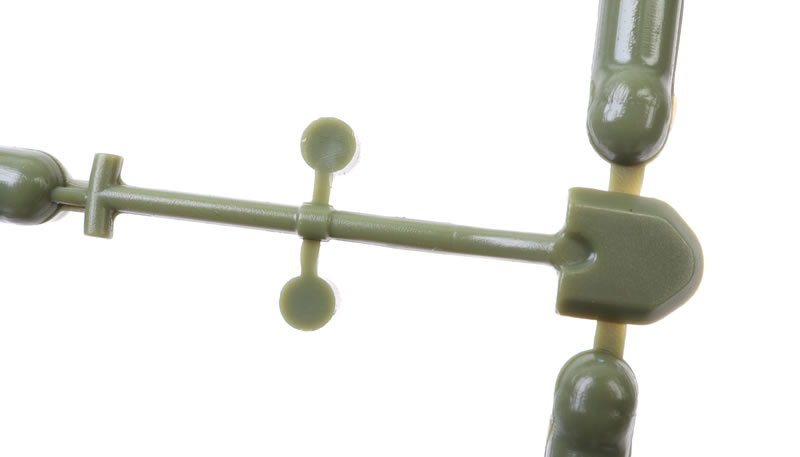
Some attention with a sanding stick will improve this.
Optional sand channels are made up from three parts.

Capped and uncapped smoke dischargers are provided - the choice is yours. Different styles of antenna base, indicators, parking lights and taillights are on the sprues too.
On the turret, you can fit the machine gun or a blanking plate at the front.
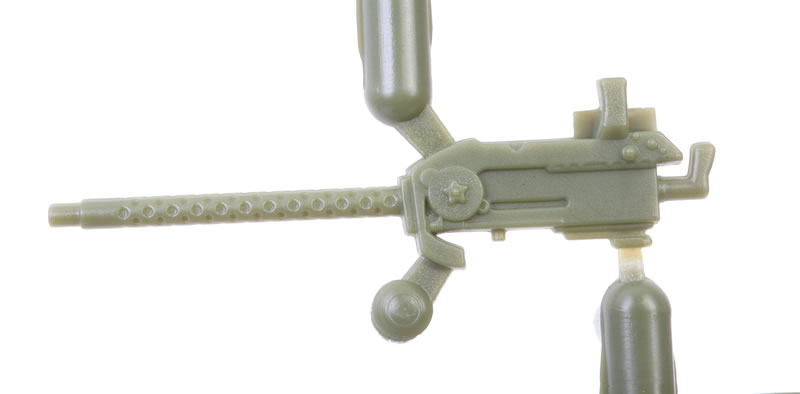
Turret tie-downs are a bit overscale. They would benefit from replacement by photo-etched parts.
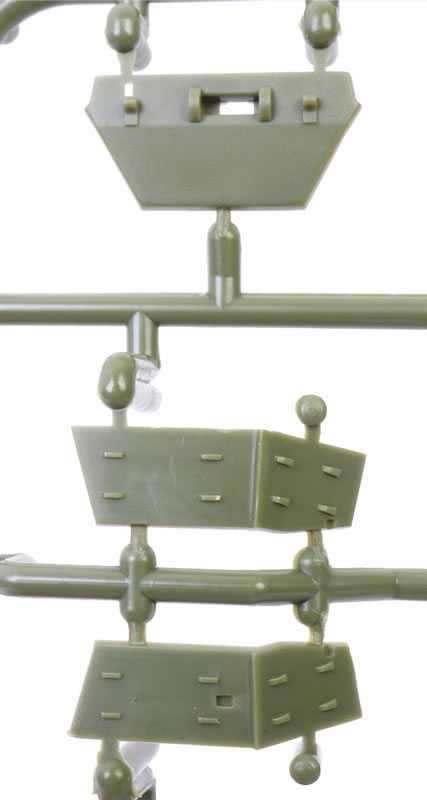
The big split Commander's hatch may be posed open, partially open or shut.
Clear parts are supplied for the headlights.
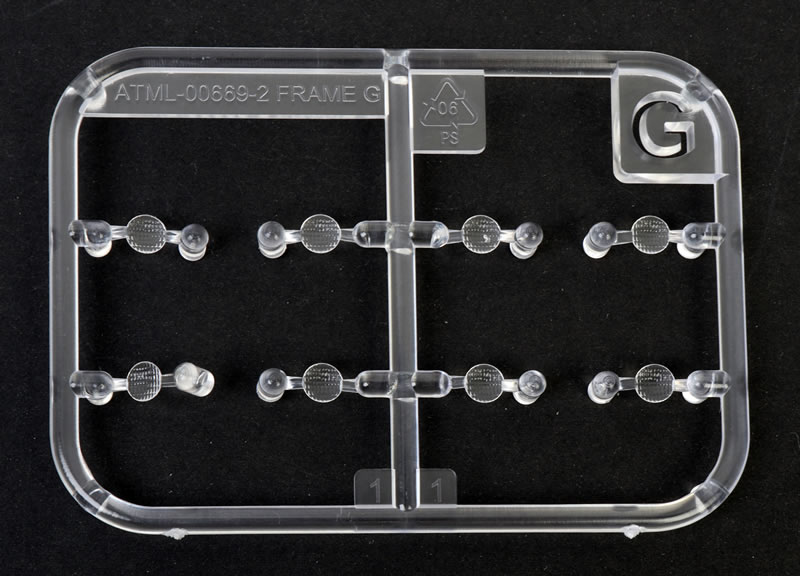
Decals are supplied for three varied marking options.
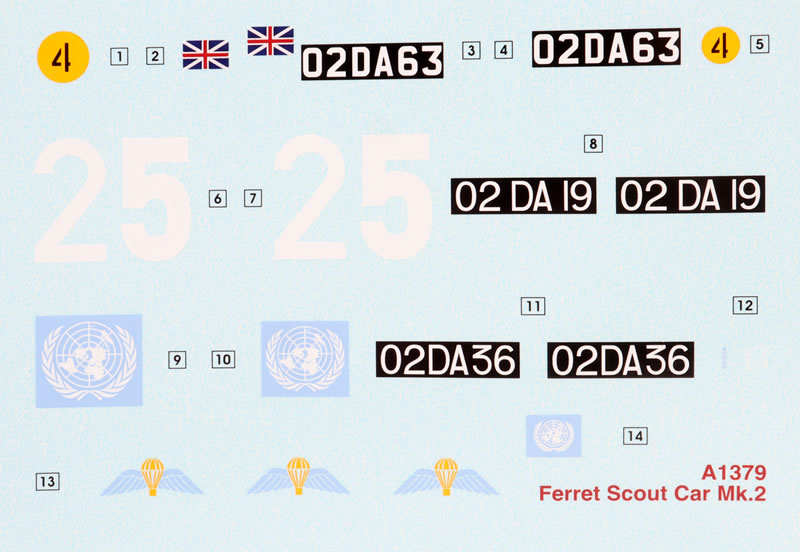
The small decal sheet is glossy and in register.
Conclusion
This is a brand new original Airfix kit and I like it.
Detail is good, the partial interior will be welcomed by detailers and ignored by others who don't care, hatches may be posed open or closed and the parts breakdown is modeller-friendly.
I'm sure that we will see 3d printed engine compartments, detail sets and conversions from the after market very soon.
Airfix's new 1:35 scale Ferret Mk.2 looks like a fast build too. I think I will test that impression out before long!
Purchased by the reviewer
Text and Images by Brett Green
Page Created 24 September, 2023
Page Last Updated
25 September, 2023











